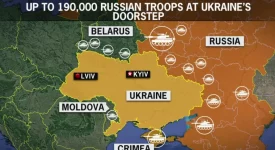Chinese soft power in Europe – defined as the ability to influence preferences through attraction or persuasion – has seen better days, an analysis by experts from 17 countries from across the continent and EU institutions has revealed. Developing soft power has been a pillar of Chinese foreign policy since 2007 and remains a stated goal of China’s long-term policy orientation to 2035. The country-level analysis from the report identifies three prominent Chinese approaches to developing soft power in Europe: promoting Chinese language and culture; shaping China’s image through the media; and using the secondary soft-power effects of economic prowess. Recently, and over the last year in particular, China has become more assertive in attempting to shape its image by expanding its toolkit, particularly to enhance its political messaging. This includes the systematic use of social media.
On the importance of China’s economy, the lines can often be blurred between the attractiveness of economic cooperation and the pressures of economic coercion. Withholding market access for European firms and products has long been an observed practice of reactive Chinese diplomacy, but an increasingly formalized development of sanctioning mechanisms, including “unreliable entity lists” and export control legislation, is a cause for growing concern. In other words, market access, trade and investment opportunities are perhaps the single largest factor determining China’s appeal in Europe, but also a major source of its coercive power.
Different patterns of Chinese soft power projections can be seen across four groups of countries analysed in the report. Firstly, in Austria, Hungary, Poland, Portugal and Slovakia, China does not appear compelled to actively project its soft power, mostly because of the lack of public interest in these countries. Secondly, in Italy and Greece, China’s soft power approach aims to arrest the trend of a deteriorating image and is geared towards damage containment. Thirdly, in Germany, Latvia, the Netherlands, Romania, Spain and the UK, perceptions of China are clearly becoming less favourable, and Beijing is struggling with growing vigilance. Finally, in Czechia, Denmark, France, and Sweden, China’s soft power is clearly in a state of free fall. In turn, EU institutions appear to follow the trend described in the third group of growing vigilance, as the risks posed by China’s geopolitical ambitions are increasingly underlined.
A number of factors have driven these trends, from the fallout of COVID-19 to Chinese domestic developments, including in Xinjiang and Hong Kong, and the impact of growing US-China rivalry. These factors ultimately appear to be more substantive drivers of European perceptions and attitudes towards China today than the traditional sources of soft power. In response, the Chinese government’s public messaging in Europe has become increasingly proactive, even aggressive, including through the imposition of sanctions. These new methods, though deployed differently across the continent and aimed in part at a Chinese political audience, point to Beijing’s objective to increase its sway over Europe by influencing related discourse. They are presumably designed to prevent negative publicity and criticism, rather than achieve likeability. An open question can thus be raised: has China become less interested in growing its appeal than in exercising its influence?
‚China’s Soft Power in Europe: Falling on Hard Times‘ – Report of the European Think-tank Network on China (ETNC) – Institut français des relations internationales / IFRI.







